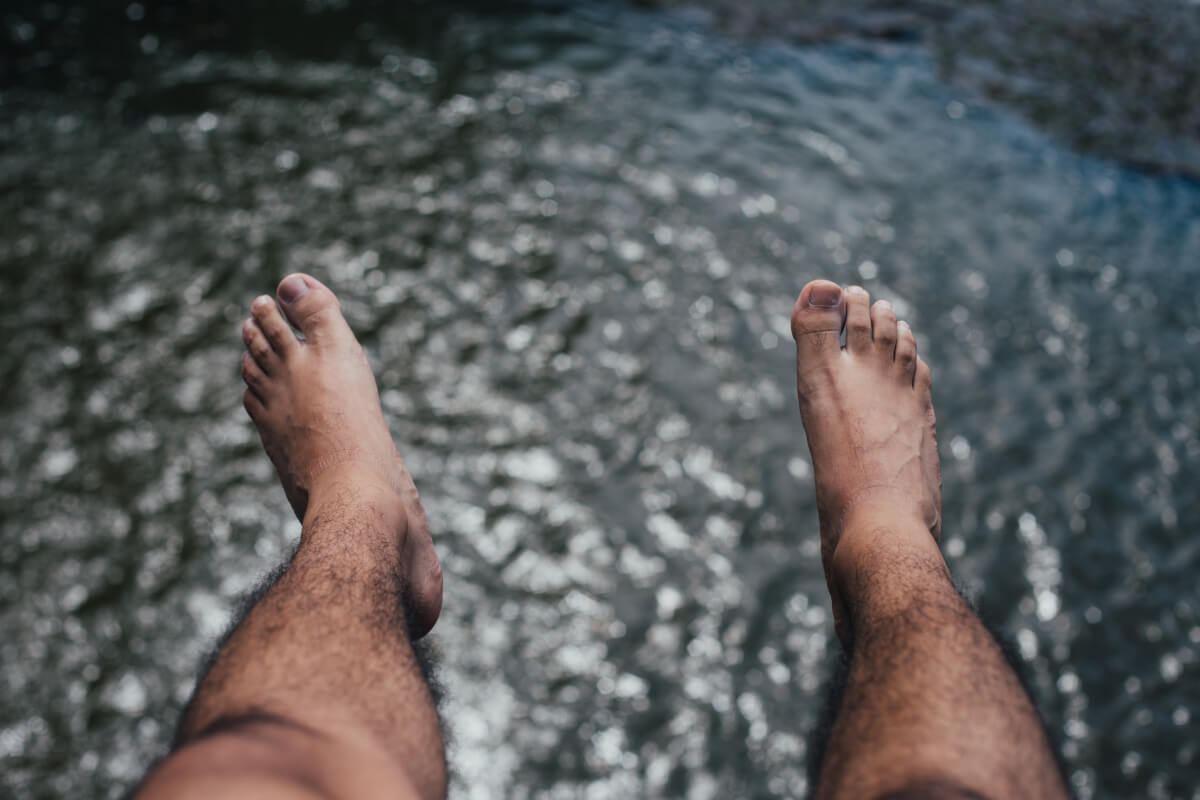It’s something you may not think about often, or may not even think about at all, but your feet can be two of the most important things for your survival. Think about it: your feet are the parts of your body that render you mobile and can get you from danger to safety quickly, in most instances.
When survival is mentioned, the first things that come to mind are shelter, water and food. But without your feet, you’ll have a really hard time securing these. A simple foot injury can cost you time and even compromise your and your group’s safety.
So, take care of your feet. Here are 10 tips that will help you make sure they’re in tip-top shape.
1. Keep your feet clean and dry
Your feet will sweat and be covered in bacteria daily. Washing them as part of your everyday routine will lessen dirt and bacteria buildup, keeping them from getting infected and minimizing fungal growth. Also remember to dry them before you put your socks and shoes on – Trench foot is still as much a danger today as it was in World War I. If you’re outdoors, clean feet can also help you from getting bitten by mosquitoes—there’s some evidence that suggests bacteria living on our feet helps mosquitoes find their way to their meal, aka: you.

2. Trim your toenails regularly (and properly)
Keeping your toenails trimmed will keep them from snagging, which can cause injuries, and make your socks and shoes last longer. Clip them straight across and not too short to avoid ingrown nails, which can be problematic, especially if you’re diabetic. If needed, have a specialist treat an ingrown toenail for you.
3. Heed the warning signs
As soon as you feel a hot spot, fix it right away before it becomes a blister, which is harder to treat and makes you more vulnerable. Apply some padding to the affected area, use a band-aid to cover the skin, or change your socks for added protection. If it does develop into a blister, don’t pop it! Keep it clean with some soap and water and cover it with a bandage, which you should regularly replace.

4. Fix those cracks as soon as you can
Like hot spots, dry and cracked heels can spell big trouble later. They could bleed, become an open wound, and be susceptible to infection. If your feet are too dry, keep them supple with some Vaseline or rich cream moisturizer.
5. Sock it up
Socks help absorb shock and wick away sweat from your feet, but only if you wear the right ones. Keep spare socks with you in case you need to change them – in fact, U.S. Army soldiers are trained to bring at least 2 pairs of socks in any engagement and to immediately change socks once they become wet. In colder weather, specialized socks can keep your toes warm and toasty. Avoid cotton socks as much as you can—they absorb sweat, dry slowly, and are poor insulators, making them a bad choice especially in cold conditions.

6. Make sure the shoe fits
Wearing ill-fitting footwear will not only be uncomfortable, it can also cause injuries. Make sure they’re properly broken in before heavy-duty use. When buying new footwear, wear the socks you expect to wear with that new purchase so you can ensure the proper fit and that there’s enough room for you to wiggle your toes. If you can, get a professional to help you get properly fitted regularly to keep up with your feet’s growth and development. Remember, the length, width and shape of your feet change as you age, gain weight, and encounter other life changes. Since the fit is different between styles and brands, not to mention the differences between your feet, you should always try new footwear on before buying it.

7. Use the right shoe for the job
Have you ever used tennis shoes for a basketball game or work boots for running? If you have, you’ll know the pain. If not, we recommend not trying it. Using the appropriate tools for its intended purpose will keep you from injuring yourself and will make your shoes or boots last longer. The right footwear is constructed well and will protect your feet more effectively while being more comfortable to wear while doing your activity.

8. If you like it, get a spare for it
Once you find the perfect shoe, you can get a couple more pairs for your workplace and your car. You can switch to your bug-out shoes immediately and walk (or run) in comfort if needed.
9. Athlete’s Foot is no joke
If you find yourself with athlete’s foot, treat them as soon as you can. The fungus can spread to other parts of your body, and it’s contagious as well. It can also cause blisters and cracks, leading to infections.

10. Stretch and exercise
Keep in shape so you can go longer distances without injuries or pulled muscles. Keeping healthy will also keep your weight at a manageable level that’s easier for your feet to support.
In many situations, your mobility will play a large role in your survival. Don’t take your feet for granted and take good care of them now so you can keep yourself from getting into trouble later.


